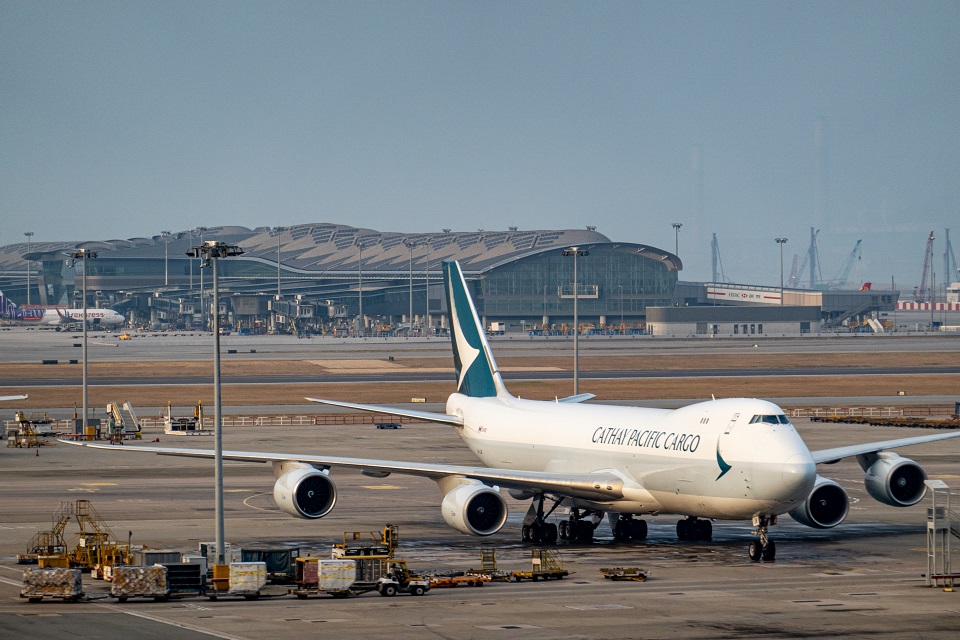Aviation
UK Airline Faces £400k Bill for Each Plane Repair Due to EU Regulations

In a challenging post-Brexit landscape, fledgling British cargo airline One Air finds itself facing significant financial strain due to stringent EU regulations. The airline has revealed that it incurs a staggering £400,000 in costs each time one of its planes requires routine servicing or repairs.
This financial burden stems from the lack of mutual recognition between the EU and the UK for professional qualifications in the aviation industry. One Air, led by CEO Chris Hope, is compelled to send its aircraft to the United States for necessary repairs, a consequence of the new post-Brexit rules.
Qatar Airways Top 8 trending Desitination for 2025
The absence of mutual recognition agreements means that British pilots must undergo costly re-examinations for qualifications that are already identical to those in the EU, while UK engineers‘ licenses are rendered practically worthless outside Britain. This situation has forced One Air to pay approximately £780,000 ($1 million) for just two services in the first seven months of the year.
The problem extends beyond pilots and engineers; it also affects architects and accountants, who similarly face obstacles due to the lack of recognition of their professional qualifications. The British Airline Pilots’ Association has called on the government to negotiate mutual recognition of licenses, which would alleviate the financial burden on airlines and streamline operations.
British Airways Appeal on Controversial ‘Fire and Rehire’ Policy Dismissed
Routine aircraft servicing, which includes checks every three months and more extensive maintenance every two years, has become increasingly difficult under the current regulations.
Components used in UK aircraft must now either be UK-approved or covered by a deal with the US. Parts from EU workshops cannot be used unless the workshop has secured UK approval, further complicating maintenance and repair processes.
Is the Boeing Factory Tour worth it? A Complete Guide

Aviation
Airbus Enhances A350 Cabin with 10-Abreast Seating

Airbus has announced a new partnership with Jiatai Aircraft Equipment, a Chinese aircraft seating manufacturer, to supply upgraded economy-class seats for the A350 widebody series.
This collaboration, unveiled at the 2024 Airshow China, focuses on developing a newly designed economy seat tailored for the A350‘s New Production Standard (NPS) cabin.
One of the key features of the NPS cabin is the ability to accommodate 17-inch wide economy seats, compared to the previous 16.5-inch wide seats that airlines were limited to in the A350’s earlier configurations.
British Airways Unveils Its Brand-New First Class Cabin for the Airbus A380
This change is made possible by the expanded space in the NPS cabin, which is 35 inches longer and 4 inches wider than the previous version. This extra space is achieved by slightly moving the cockpit wall forward and shifting the rear pressure bulkhead back by one frame.
The wider cabin allows airlines to add up to 30 extra economy seats without compromising comfort. For airlines opting for a 3-4-3 seating layout, the 17-inch wide seats are an excellent choice for a more comfortable passenger experience. However, some airlines, such as Iberia, may choose to retain a 9-abreast layout with wider seats for added comfort.
The NPS cabin also offers enhanced flexibility for airline operators. One major advantage is the ability to easily switch between a 9-abreast and 10-abreast seating configuration without requiring significant downtime for aircraft reconfiguration. Airlines can use the same seat rails, tracks, and IFE interfaces, making the transition smoother and quicker.
Etihad Airways Unveils 10 Exciting New Routes for 2025
In addition, the design of the floor attachments and air-conditioning systems has been optimized for 10-abreast seating, meaning airlines can upgrade their cabins without needing to make substantial modifications to the aircraft’s structure.
Though it’s still unclear when Jiatai’s economy-class seats will be officially added to the A350’s Buyer Furnished Equipment (BFE) catalogue, the collaboration marks a significant step toward enhancing the A350’s cabin offerings.
With this partnership, Airbus is providing more seating options for airlines, ensuring that they can meet diverse customer needs while improving overall operational efficiency.
-

 Aviation2 months ago
Aviation2 months agoMicrosoft Flight Simulator Raises $3 Million to Bring Back the An-225 Mriya
-

 Airlines2 months ago
Airlines2 months agoQatar Citizens Can Travel to the United States Without a Visa
-

 Aviation2 months ago
Aviation2 months agoQatar Airways bans these new Electronic Devices on plane
-

 Airlines2 months ago
Airlines2 months agoJapan Airlines Rolls Out Free Domestic Flights to International Passengers
-

 Defence2 months ago
Defence2 months agoWhich Country Has the Largest Fleet of Fighter Aircraft?
-

 Airport2 months ago
Airport2 months agoWestern Sydney Airport Welcomes Its First Plane After 6 Years of construction
-

 Airlines4 days ago
Airlines4 days agoDAMAC Air: Dubai’s New Luxury Airline Offers Free Flights for Registration
-

 Aviation2 months ago
Aviation2 months agoDid you know ? Once Boeing 747 carried 1088 passenger in 1991








